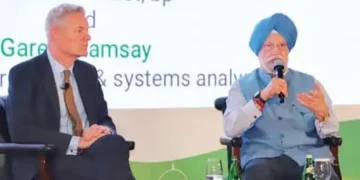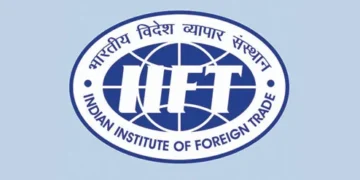Blitz Bureau
NEW DELHI: Prime Minister Narendra Modi’s I-Day announcement that India will launch its first indigenously produced semiconductor chips by the end of this year is being seen as a watershed moment for the country’s technology ambitions and a potential game-changer for the global semiconductor industry.
The $600-billion global semiconductor industry is heavily concentrated in Taiwan, South Korea, and the United States. Recurrent supply shocks, triggered by the pandemic and geopolitical tensions, have underlined the risks of over-dependence on a handful of regions.
India’s entry, with 10 projects worth nearly Rs 1.6 lakh crore, is set to diversify and stabilise global supply chains. Flagship ventures include Tata-PSMC wafer fab in Gujarat (Rs 91,000 crore), Micron’s assembly and testing unit in Sanand ($2.75 billion), and Tata TSAT packaging facility in Assam (Rs 27,000 crore).
Economic engine
India’s semiconductor market, valued at $38 billion in 2023, is expected to soar to $100–110 billion by 2030. This growth, coupled with the projected rise of the electronics manufacturing sector to $282–500 billion, positions semiconductors as a critical driver of the economy.
Foreign investors are betting big. Lam Research of the US has pledged over $1 billion in Karnataka, while NXP Semiconductors has committed $1 billion for R&D expansion in India. Government incentives under the Semicon India Mission, which provides up to 50 per cent fiscal support for projects, are drawing global majors into the Indian ecosystem.
The Cabinet’s recent approvals have spread investments across states. Odisha secured two projects worth Rs 4,009 crore, Punjab will expand chip packaging facilities, and Andhra Pradesh will house new ATMP plants. The Tata TSAT plant in Assam alone is expected to generate around 27,000 jobs.
At the same time, the upgrading of SCL Mohali and the creation of Bharat Semiconductor Research Centre (BSRC) at IIT Madras will cement India’s long-term research base.
Global ripple effects
Analysts say India’s chip production will bring fresh competition and stability to the global market, helping reduce price volatility and offering trusted alternatives to over-reliance on East Asia. Domestically, the chips will power smartphones, electric vehicles, defence systems, medical devices, and AI platforms, accelerating India’s march into the high-tech era.
India’s initial capacity will focus on mature nodes and packaging, with ambitions to advance into next-generation fabrication in the coming decade. If realised, India could emerge as a third semiconductor pillar – alongside Taiwan, South Korea and the West – by 2030.
For now, the countdown to the first ‘Made in India’ chips marks a milestone: a bold step into the future that promises to reshape both India’s economy and the world’s semiconductor map.
































